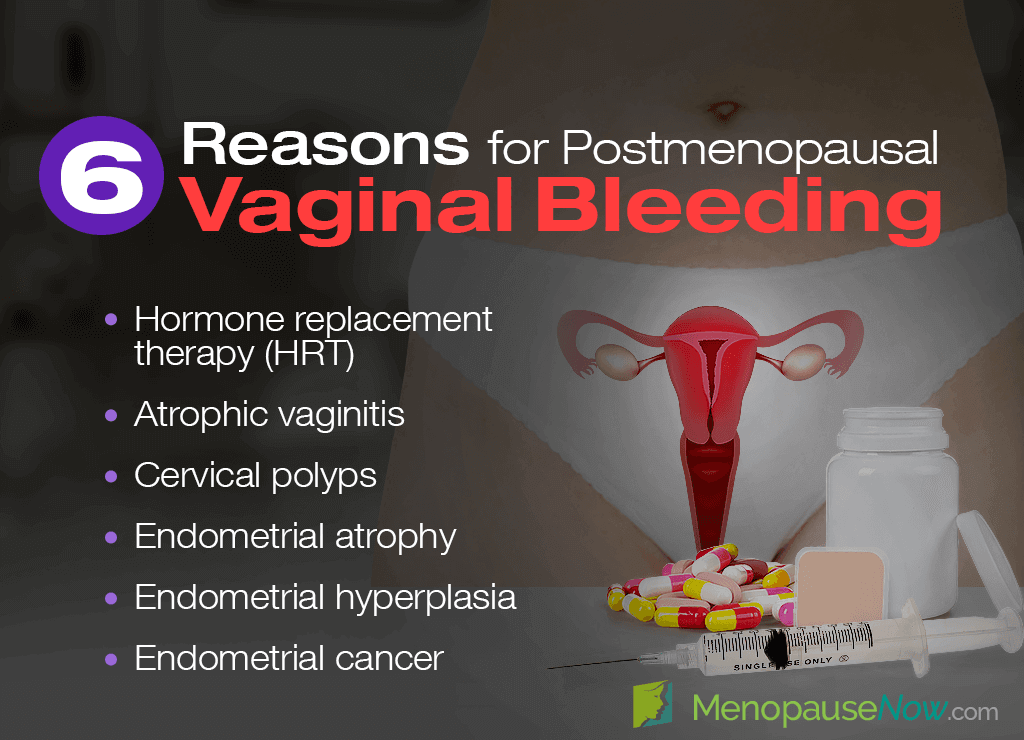About 10% of women aged 55 and above report experiencing vaginal bleeding after menopause, or a year or more after their final menstrual period.1 While the majority of postmenopausal bleeding are not life-threatening, it is key to seek medical advice right away to rule out other potentially serious underlying causes.
Read on to find out six reasons for uterine bleeding after menopause so that you can make the best decisions about your postmenopausal health.
Hormone Replacement Therapy (HRT)
Women taking HRT to lessen symptoms of the menopausal transition may experience vaginal bleeding as its side effect.2 The bleeding or spotting is generally light and usually unpredictable, but can get excessive at times, often affecting a woman's confidence and quality of life.
Atrophic Vaginitis
Atrophic vaginitis, or vaginal atrophy, is the result of changes to the lining of the vagina due to reduced levels of estrogen during postmenopause. The vaginal walls become drier, thinner, and less elastic, which can lead to inflammation. It is one of the most common causes of uterine bleeding after menopause.
Cervical Polyps
Benign cervical polyps are relatively common in postmenopausal women, while precancerous or malignant polyps are very rare. These growths of tissue are found on the lower part of the uterus connecting to the cervix, or the cervical canal, which can cause bleeding after menopause.
Endometrial Atrophy
A lack of estrogen not only causes the lining of the vagina to thin, but its deficiency also causes the lining of the uterus to become thinner and the vessels in the lining to break down. This, in turn, results in spontaneous uterine bleeding after menopause or spotting.
Endometrial Hyperplasia
This is a condition in which the lining of the uterus becomes too thick, generally because of an accumulated amount of estrogen in the body with too little progesterone to counteract its effects due to HRT. Endometrial hyperplasia is considered a risk factor for endometrial cancer.3
Endometrial Cancer
Around 10% of women with postmenopausal bleeding have endometrial cancer.1 In almost all of these cancer cases, bleeding is the first sign. If the cancer is revealed and treated early, it is commonly curable. This is why it is important for postmenopausal women to undergo rergular check-ups and report any vaginal bleeding right away.
Recommendations
Postmenopausal bleeding is not normal and should be evaluated by your doctor to rule out potentially life-threatening underlying causes. He or she may also recommend that you lead a healthy lifestyle to allay any further postmenopause symptoms experienced. This includes an optimized diet, wholesome habits, and the smart use of alternative medicine. Learn more about postmenopause treatments so you can have an improved quality of life into your twilight years.
Sources
- Harvard Health Publishing. (2011). Abnormal uterine bleeding in peri- and postmenopausal women. Retrieved March 20, 2019, from https://www.health.harvard.edu/womens-health/abnormal-uterine-bleeding-in-peri-and-postmenopausal-women
- Mayo Clinic. (2018). Bleeding after menopause: Is it normal? Retrieved March 20, 2019, from https://www.mayoclinic.org/diseases-conditions/menopause/expert-answers/bleeding-after-menopause/faq-20058396
- NHS. (2017). Postmenopausal bleeding. Retrieved March 20, 2019, from https://www.nhs.uk/conditions/post-menopausal-bleeding/
- The Royal Women's Hospital. (n.d.). Bleeding after menopause. Retrieved March 20, 2019, from https://www.thewomens.org.au/health-information/periods/periods-overview/bleeding-after-menopause
- UT Southwestern Medical Center. (2016). Bleeding after menopause: It's not normal. Retrieved March 20, 2019, from https://utswmed.org/medblog/postmenopausal-bleeding/
Footnotes:
- The Practitioner. (2012). Postmenopausal bleeding should be referred urgently. Retrieved January 27, 2020 from https://www.ncbi.nlm.nih.gov/pubmed/22662514
- Mayo Clinic. (2017). Hormone replacement rtherapy: can it cause vaginal bleeding? Retrieved January 27, 2020 from https://www.mayoclinic.org/diseases-conditions/menopause/expert-answers/hormone-replacement-therapy/faq-20058499
- American Cancer Society. (2019). Endometrial Cancer Risk Factors. Retrieved January 27, 2020 from https://www.cancer.org/cancer/endometrial-cancer/causes-risks-prevention/risk-factors.html




